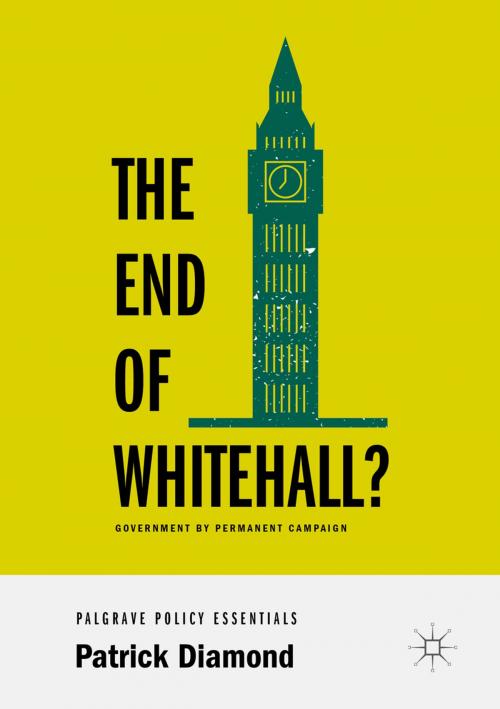The End of Whitehall?
Government by Permanent Campaign
Nonfiction, Social & Cultural Studies, Political Science, Government, Public Policy, International| Author: | Patrick Diamond | ISBN: | 9783319961019 |
| Publisher: | Springer International Publishing | Publication: | July 31, 2018 |
| Imprint: | Palgrave Macmillan | Language: | English |
| Author: | Patrick Diamond |
| ISBN: | 9783319961019 |
| Publisher: | Springer International Publishing |
| Publication: | July 31, 2018 |
| Imprint: | Palgrave Macmillan |
| Language: | English |
This Palgrave Policy Essential maps and assesses key changes in the Whitehall model over the last two decades. It argues that the traditional Whitehall model is being replaced by a system of ‘New Political Governance’ (NPG) centred on politicised campaigning; the growth of political advisory staff relative to the permanent civil service; the personalisation of bureaucratic appointments; and the creation of a government machine that is ‘promiscuously partisan’. It provides a snapshot of the institutional changes that are unfolding at a critical moment, as Whitehall prepares to support Ministers in carrying out the Brexit process while addressing a series of long-term structural challenges from the demographic pressures of the ageing society to the impact of climate change. Austerity since 2010 has had a further transformative effect on Whitehall, with drastic reductions in the civil service workforce, the restructuring of government agencies, and a reconfiguration of the traditional roles and responsibilities of the permanent civil service.
This Palgrave Policy Essential maps and assesses key changes in the Whitehall model over the last two decades. It argues that the traditional Whitehall model is being replaced by a system of ‘New Political Governance’ (NPG) centred on politicised campaigning; the growth of political advisory staff relative to the permanent civil service; the personalisation of bureaucratic appointments; and the creation of a government machine that is ‘promiscuously partisan’. It provides a snapshot of the institutional changes that are unfolding at a critical moment, as Whitehall prepares to support Ministers in carrying out the Brexit process while addressing a series of long-term structural challenges from the demographic pressures of the ageing society to the impact of climate change. Austerity since 2010 has had a further transformative effect on Whitehall, with drastic reductions in the civil service workforce, the restructuring of government agencies, and a reconfiguration of the traditional roles and responsibilities of the permanent civil service.















